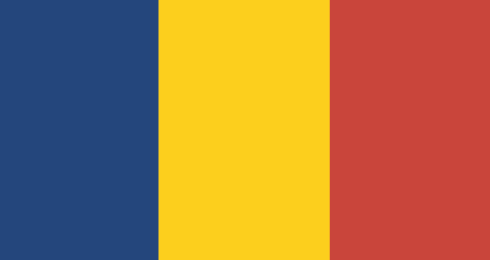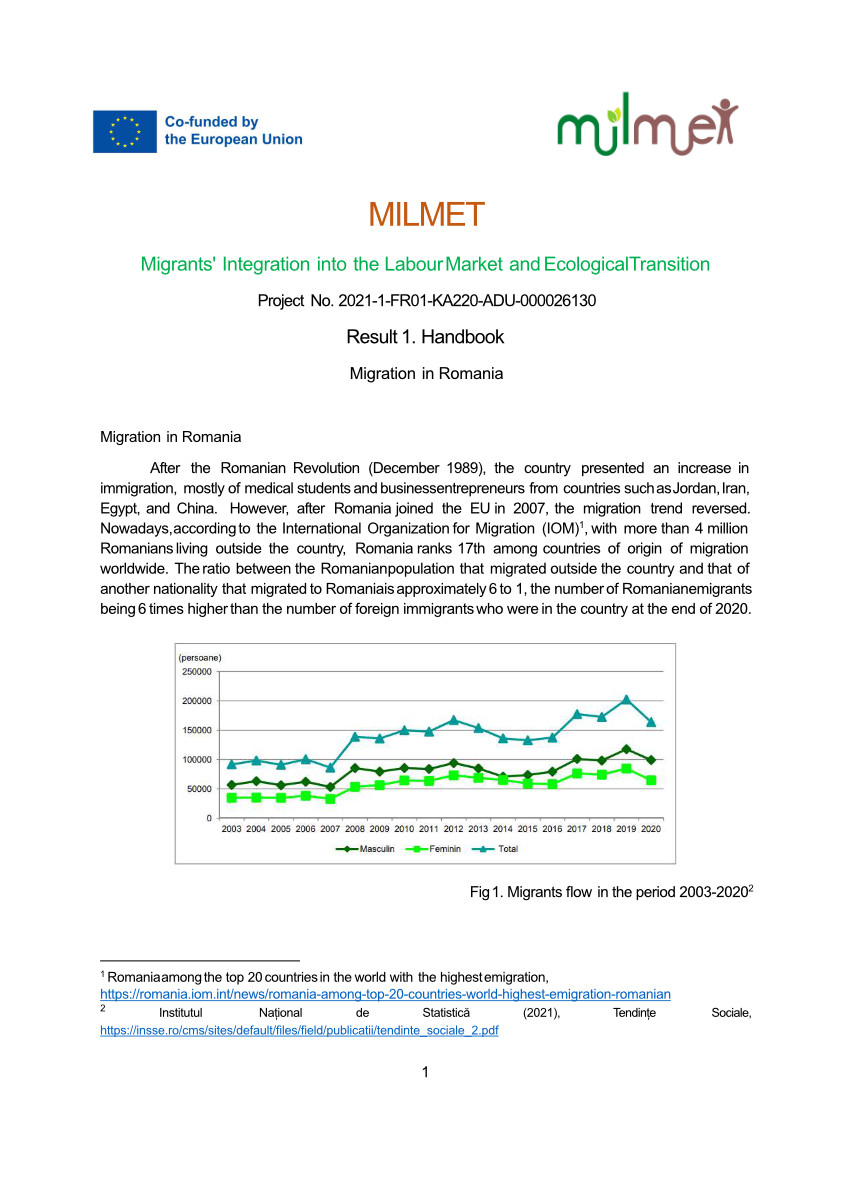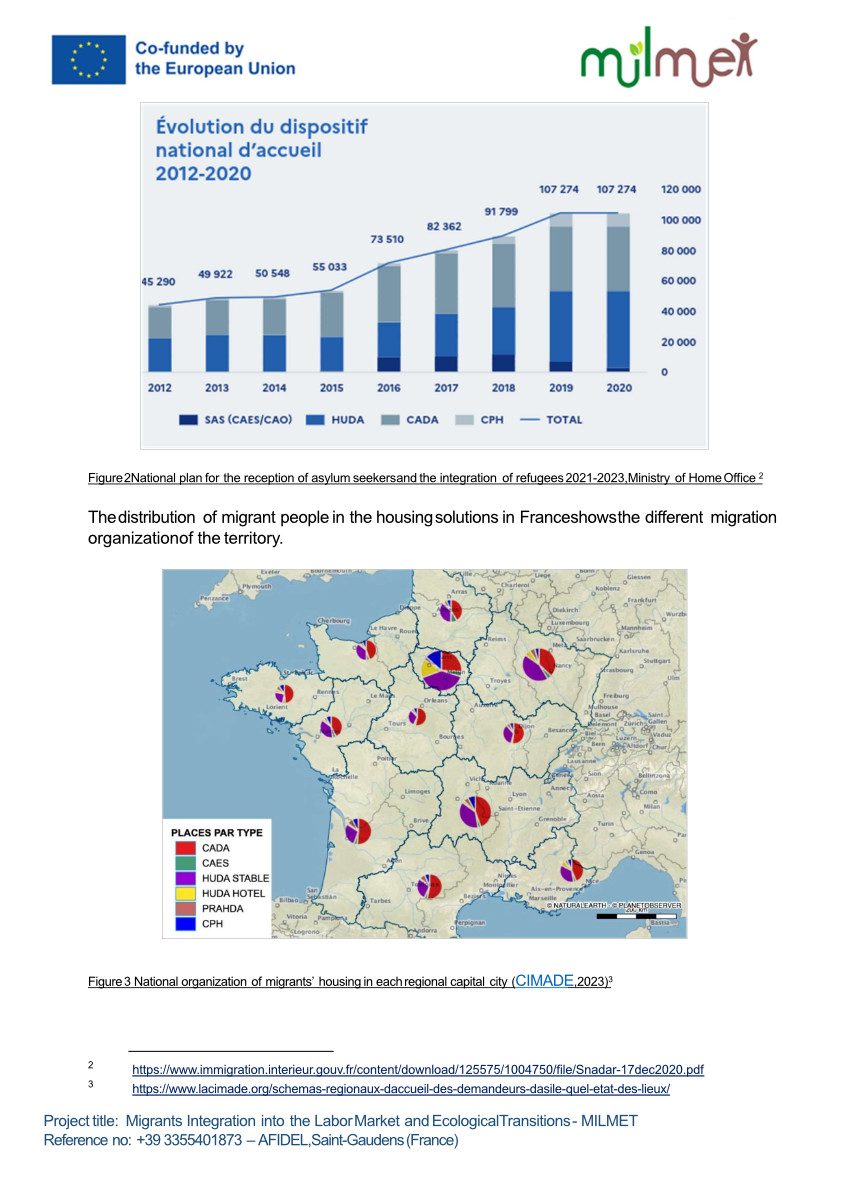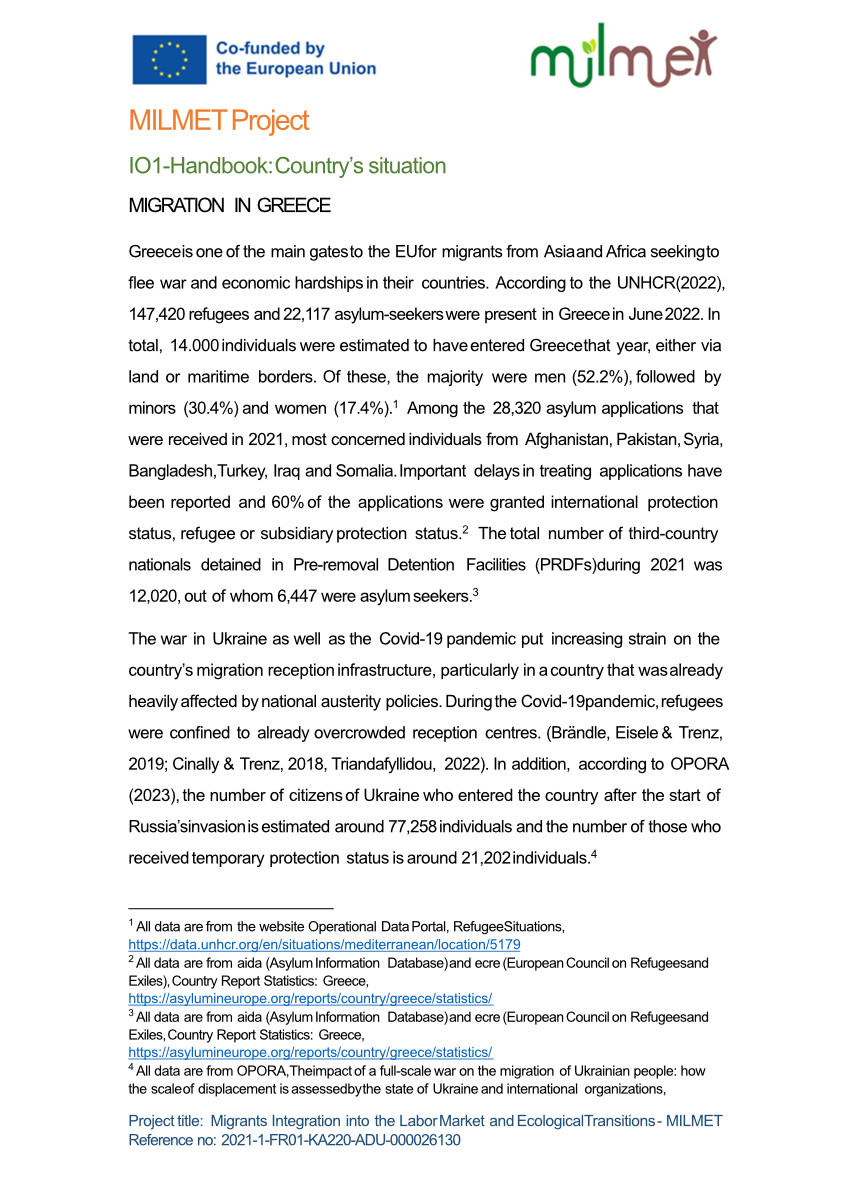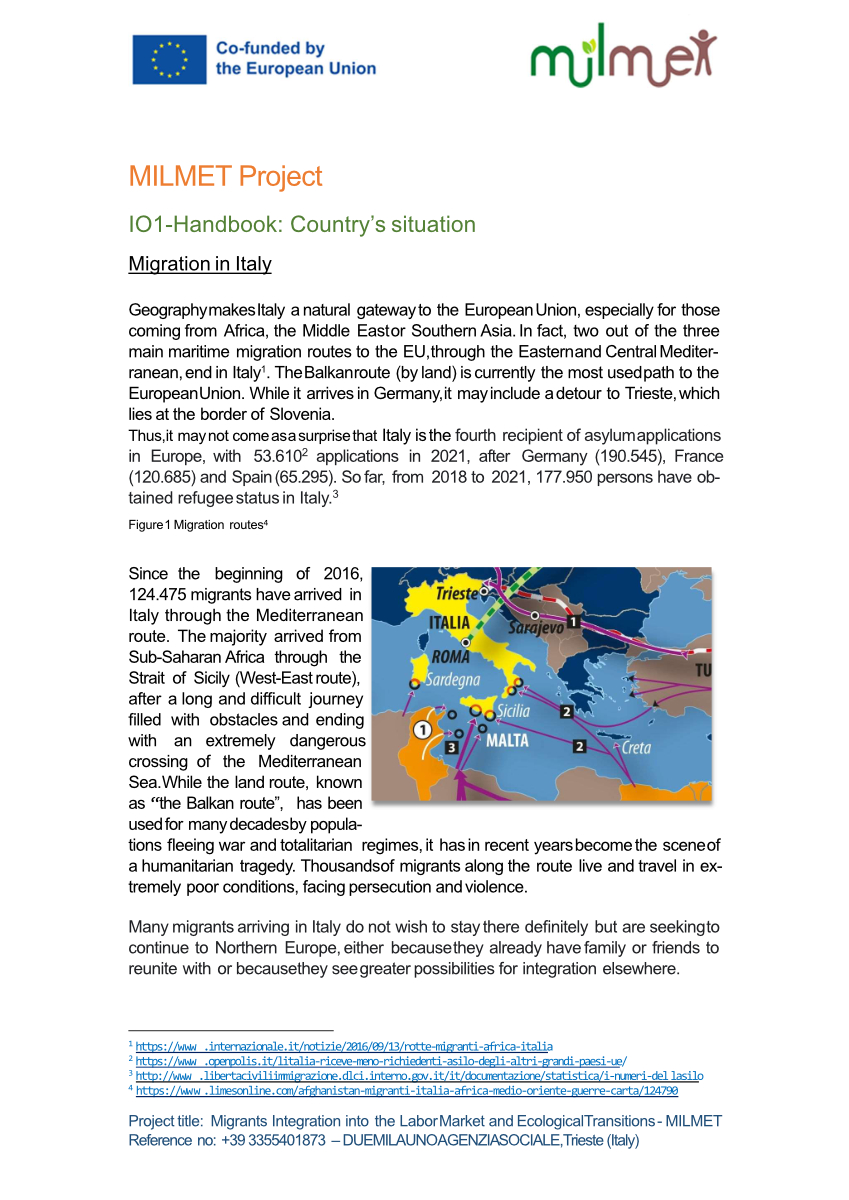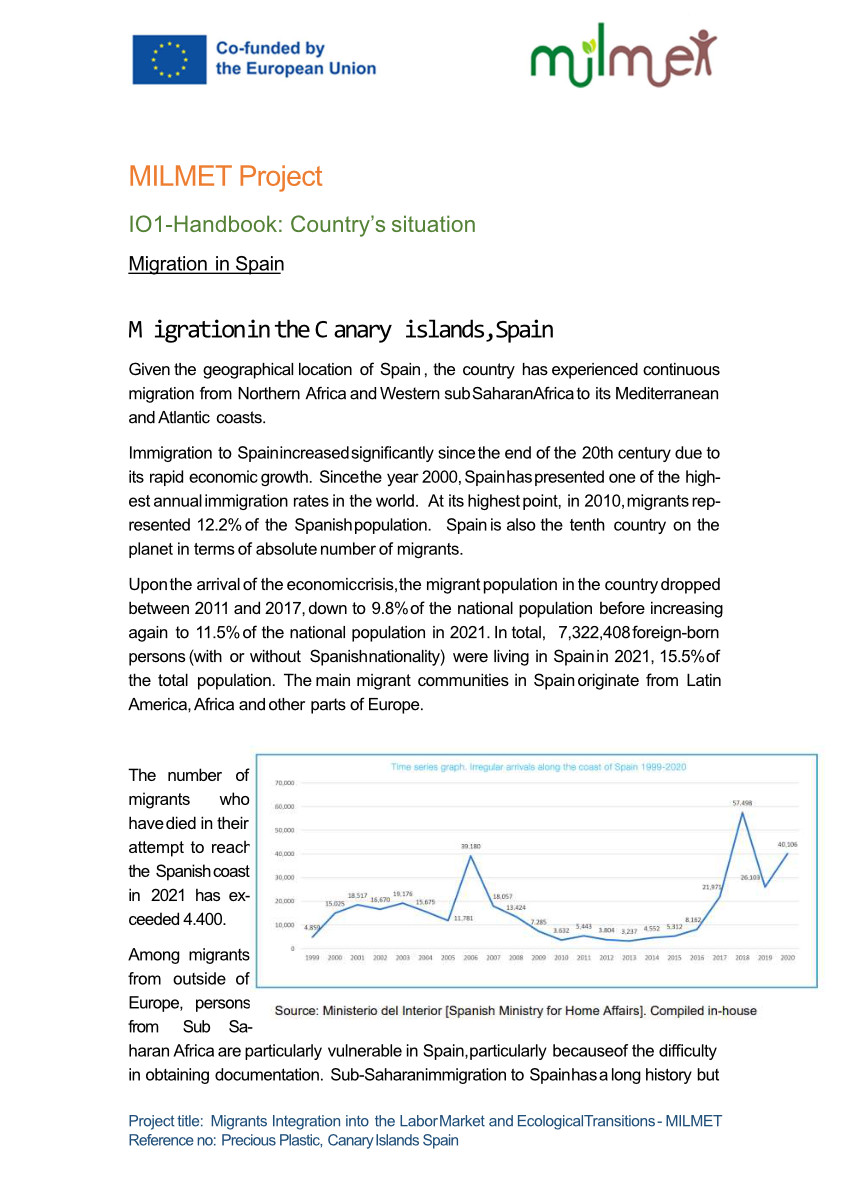Milmet
Country situation

Migration in Romania
Nowadays, according to the International Organization for Migration (IOM)1, with more than 4 million Romanians living outside the country, Romania ranks 17th among countries of origin of migration worldwide. The ratio between the Romanian population that migrated outside the country and that of another nationality that migrated to Romania is approximately 6 to 1, the number of Romanian emigrants being 6 times higher than the number of foreign immigrants who were in the country at the end of 2020…
Migration in France
Several criteria determine the access to and right to stay France for migrants…
Migration in Greece
Greece is one of the main gates to the EU for migrants from Asia and Africa seeking to flee war and economic hardships in their countries. According to the UNHCR (2022), 147,420 refugees and 22,117 asylum-seekers were present in Greece in June 2022. In total, 14.000 individuals were estimated to have entered Greece that year, either via land or maritime borders. Of these, the majority were men (52.2%), followed by
minors (30.4%) and women (17.4%).1 Among the 28,320 asylum applications that were received in 2021, most concerned individuals from Afghanistan, Pakistan, Syria, Bangladesh, Turkey, Iraq and Somalia. Important delays in treating applications have been reported and 60% of the applications were granted international protection status, refugee or subsidiary protection status…
Migration in Italy
lies at the border of Slovenia.
Thus, it may not come as a surprise that Italy is the fourth recipient of asylum applications in Europe, with 53.6102 applications in 2021, after Germany (190.545), France (120.685) and Spain (65.295). So far, from 2018 to 2021, 177.950 persons have obtained refugee status in Italy…
Migration in Spain
Immigration to Spain increased significantly since the end of the 20th century due to its rapid economic growth. Since the year 2000, Spain has presented one of the highest annual immigration rates in the world. At its highest point, in 2010, migrants represented 12.2% of the Spanish population. Spain is also the tenth country on the planet in terms of absolute number of migrants.
Upon the arrival of the economic crisis, the migrant population in the country dropped between 2011 and 2017, down to 9.8% of the national population before increasing again to 11.5% of the national population in 2021…

